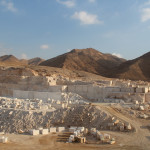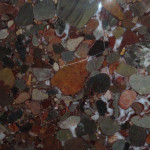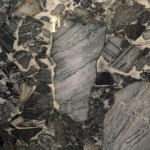Unveiling The Future With Spatial Computing
However, additional investigation is required in the context of spatial computing to effectively combine the realms of digital and bodily environments. The Apple Vision Pro apple_vision_pro signifies a paradigm shift in the Spatial Computing realm of spatial computing, seamlessly integrating digital content material with the user’s physical surroundings. This integration fosters a sense of presence and connectivity, thereby enhancing the consumer expertise. The gadget offers an expansive platform for applications, breaking free from the limitations of traditional shows and introducing a three-dimensional consumer interface. This interface is controlled through intuitive inputs such as eye actions, hand gestures, and voice commands. It serves as a prime instance of how AR can have multiple applications, including 3D modeling, architectural visualization, and industrial design.
What’s The Difference Between Spatial Computing, Extended Actuality (xr) And Immersive Technologies?
Spatial computing is a time period that you will note enhance in use across tech news and tech announcements in the months to return, but it nonetheless is in its infancy. The age of AI hardware, smartglasses, and spatial computing is here – and you can assist form that future today. Many out there confuse the time period and equate it to AR, VR, mixed reality (MR), or prolonged actuality (XR), but per the definition above, it is clear that these usually are not the one applied sciences that enable Spatial Computing. AI plays a crucial function and is certainly one of the most necessary underlying technologies that will assist deliver spatial computing to the plenty. Microsoft has defined spatial computing as the flexibility of gadgets to concentrate on Software Development Company their surroundings and to represent this digitally.
Virtual Showrooms And Retail Spaces
Sensors able to mechanically switching lights on when you enter a room are examples of spatial computing. The adoption of spatial computing might be based on usability, consolation, value, and worth. With the Apple Vision Pro, Apple has pushed the boundaries of usability, consolation, and worth.
Superside Embraces Spatial Computing In Design And Advertising
In this part, we are going to discover a massive selection of progressive spatial computing initiatives. These tasks showcase the practical functions and artistic potentialities of this rising expertise. Table 5 is a complete overview of spatial computing initiatives and their respective real-world purposes. The company is expanding content material creation for all its franchises, encompassing the whole lineup of Disney+ and sports, into spatial computing.
Spatial Computing And Digital Twins
Join our community of 50,000+ who receive one of the best in design and marketing content, weekly. As a marketing chief who lives and breathes content, she’s had the privilege of heading up content material groups and has additionally been in the trenches as a advertising team of one. She’s worked at a broad range of tech companies throughout PLG, SaaS and most just lately, AI. For future developments to Apple’s Vision Pro, their yearly WWDC and the library of technical sessions are the most effective ways to observe their progress.
Applications Of Spatial Computing For Manufacturers In 2024
However, developments are being made in these areas, and because the trade evolves and turns into more competitive, the prices of sensors, displays, and other hardware components are expected to lower. During surgeries, surgeons might view a patient’s medical imaging scans by way of headsets, thereby enriching their operational precision. Moreover, this know-how might aid patients with bodily or cognitive disabilities, offering them with customized digital assistants or rehabilitation exercises designed for his or her specific needs. Meta and different tech giants are leading the finest way with the release of superior headsets, and Apple is joining this pattern with its Vision Pro headsets. However, Apple is keen to differentiate its product by branding it with the term “spatial reality” quite than the standard descriptors. In my time at AWS I have learned that this may be a firm of builders and my group believes whole-heartedly that we should innovate and invent on behalf of our prospects.
Spatial computing is revolutionizing industrial design by offering designers and engineers an immersive, interactive platform. It brings a new dimension to design processes, enhancing visualization, collaboration, and prototyping. While the present focus is on facilitating human-to-human interactions, the horizon is even more compelling. In the near future, technicians might probably control robotic avatars remotely to perform tasks, signaling a leap towards unprecedented efficiency and convenience.
However, this know-how is not restricted to XR applied sciences; it encompasses a broader vary of technologies and purposes. Navigating the regulatory landscape for spatial computing presents a multi-faceted problem, encompassing not just authorized but additionally technical complexities. On one hand, there is a obtrusive absence of universally accepted requirements that outline the operational parameters for hardware and software program elements, leading to fragmented ecosystems that can inhibit interoperability and scalability. The amalgamation of these elements creates a convoluted regulatory setting that necessitates a balanced, data-driven strategy to foster innovation while making certain public security and moral compliance. Navigating the regulatory panorama for spatial computing entails addressing the absence of common standards and privacy considerations.
Spatial computing can revolutionize the gaming and leisure industries with AR, VR, and MR to supply immersive experiences. These technologies can enable players to interact with virtual worlds using gestures and actions. With spatial computing, it will be potential to enhance the creation of user-generated content to construct personalized virtual environments.
Moreover, spatial computing can address the challenges of accessibility and inclusion by providing numerous learning styles and individual needs. Assessment and feedback methods may be enhanced utilizing interactive assessments and real-time analysis. Thus, by integrating spatial computing, educators can create dynamic and interesting learning environments to optimize students’ studying outcomes. This work aimed at predicting student performance, creating proactive scholar care methods, and offering customized schooling providers.
- Microsoft has explored the world of spatial computing with Microsoft Mesh, the HoloLens headset, and even immersive experiences for Microsoft Teams.
- Without it, it might be inconceivable for us to work together with digital residence assistants like Alexa or use ride-sharing apps to move around the city.
- In many alternative industries, spatial computing has the potential to enhance and optimize general teamwork and manufacturing.
- At the center of our business is a pronounced dedication to empower business, organizations, and people by way of our informative contents.
- Spatial computing depends on numerous sensors and cameras integrated into the bodily environment to gather knowledge concerning the location of virtual objects and analyze their relationships in a spatial context.
Big knowledge analytics and AI present producers with informed selections, predict upkeep requirements, and optimize production procedures. Robotics and automation offer streamlined operations to guarantee accuracy and consistency. Advanced sensors together with cloud computing and sturdy cybersecurity measures, play an important function in establishing a safe and well-connected manufacturing ecosystem. These applied sciences have enhanced effectivity, high quality, and agility in modern manufacturing industries. Modern technologies have reworked the educating and studying panorama with the introduction of revolutionary tools and platforms.





